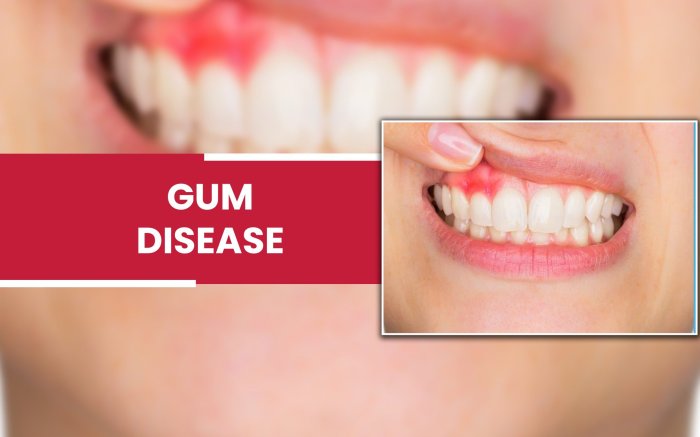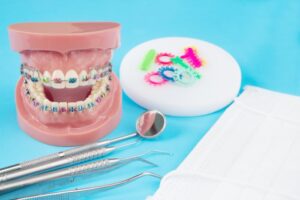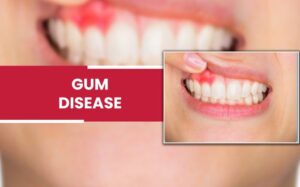
Welcome to the wild world of Gum disease, where bacteria throw a never-ending party and your gums are the unwitting hosts! If you’ve ever wondered what’s lurking beneath that pearly smile, buckle up because we’re diving into the stages, symptoms, and the oh-so-fun risk factors associated with gum disease. Spoiler alert: your overall health might just be crashing this dental fiesta too!
Gum disease is more than just a pesky dental dilemma; it’s a sneaky ninja that can pop up in stages, starting with gingivitis and potentially leading to more severe periodontitis. The symptoms range from red, swollen gums to that alarming tendency for them to bleed when you brush. And if you think your lifestyle doesn’t have any impact, think again—everything from smoking to sugary snacks can escalate your risk.
So, let’s get to the bottom of it and uncover how gum disease intertwines with your overall health in ways you never imagined.
Understanding Gum Disease
Gum disease, or periodontal disease if you want to sound fancy at parties, is like that sneaky gremlin that creeps up on your dental hygiene. It starts as a minor irritation but can escalate into a full-blown dental drama if ignored. Understanding its stages, risk factors, and how it connects to your overall health is essential for keeping that smile bright and your breath fresh enough to clear a room.The progression of gum disease can be likened to a sitcom with multiple seasons, each featuring its own unique cast of characters: gingivitis, periodontitis, and advanced periodontitis.
Initially, gingivitis, the lovable but misguided sidekick, appears with symptoms like red, swollen gums that might bleed during brushing. If left unchecked, it evolves into periodontitis, where the gums start separating from teeth, creating pockets that can trap food and plaque. Finally, in the dramatic climax of advanced periodontitis, the supporting cast of the jawbone starts to fade away, leading to tooth loss.
Stages of Gum Disease and Their Symptoms
Understanding the stages of gum disease is crucial for your dental health journey. Here’s a breakdown of each stage and the symptoms you can expect:
- Gingivitis: The first stage where gums become inflamed, red, and may bleed while brushing. It’s basically your gums saying, “Hey, pay attention!”
- Early Periodontitis: Here, the inflammation progresses to deeper pockets forming around teeth. You might notice some bad breath that could clear a crowded elevator.
- Moderate Periodontitis: Gum recession occurs, and the supporting bone begins to weaken. Tooth movement might start, making you feel like you’re on a dental roller coaster.
- Advanced Periodontitis: The final act where significant bone loss leads to tooth mobility and potential loss. At this point, your teeth might be packing their bags and getting ready for a one-way trip.
Risk Factors Associated with Developing Gum Disease
Several factors can increase the likelihood of developing gum disease, and knowing them can help you dodge this dental bullet. Here are some notable risk factors that might turn your gums into drama queens:
- Smoking: A leading cause; it’s like throwing a party for bacteria and giving them VIP access to your mouth.
- Diabetes: Poorly controlled diabetes can affect your gums like a bad roommate affecting your peace. If your sugar is high, so are your chances of gum issues.
- Hormonal changes: Fluctuations during puberty, menstruation, or pregnancy can make gums more sensitive, turning them into emotional stars of their own soap opera.
- Genetics: If your family has a history of gum disease, it’s like inheriting the family bad habits but in gum form.
- Poor oral hygiene: When you skip brushing or flossing, it’s akin to neglecting a pet. Soon, you’ll have more than just a mess to deal with.
Connection Between Gum Disease and Overall Health
The link between gum disease and overall health is as strong as a superhero and their sidekick. Research shows that the inflammation caused by gum disease can have repercussions beyond the mouth, affecting your heart, diabetes, and even respiratory health. Some significant points to consider:
- Heart Disease: Periodontal bacteria can enter the bloodstream, increasing your risk of heart disease, as if your mouth were throwing a surprise party for bacteria.
- Diabetes: It’s a two-way street; gum disease can raise blood sugar levels, and high blood sugar can worsen gum health—a vicious cycle that’s harder to break than a bad habit.
- Respiratory Issues: Gum bacteria can travel to the lungs, potentially causing infections like pneumonia, making your mouth a gateway to your lungs that you didn’t sign up for.
- Pregnancy Complications: Gum disease can lead to premature births and low birth weight, making it a real concern for expecting mothers.
“Healthy gums are not just about a pretty smile; they are crucial for overall health. Take care of them, and they’ll take care of you!”
Prevention and Treatment of Gum Disease

If gum disease were a movie, it would be a horror flick with plaque as the villain, and our toothbrush as the hero. Luckily, we can take action to prevent this frightful scenario. With the right oral hygiene practices and lifestyle choices, gum disease can often be avoided or managed effectively. Let’s dive into the world of prevention and treatment, where your dazzling smile can shine brighter than ever!
Methods for Preventing Gum Disease
Maintaining good oral hygiene is paramount in the fight against gum disease. Think of it as a daily battle where your toothbrush, floss, and mouthwash are your trusty sidekicks. Here are some essential methods for keeping your gums as healthy as a clam at high tide:
- Brushing twice a day: A good brush is like a knight in shining armor for your teeth. Use fluoride toothpaste and brush for at least two minutes to ensure every crevice is clean.
- Flossing daily: Flossing is like giving your gums a spa day, removing food particles and plaque that your toothbrush just can’t reach. Make sure to floss gently to avoid gum irritation.
- Regular dental check-ups: Visiting your dentist is like checking in on your superhero team. Regular cleanings and check-ups help catch gum disease early before it escalates into something more sinister.
- Using mouthwash: Rinsing with an antimicrobial mouthwash can help reduce plaque buildup, freshen breath, and give your mouth a refreshing boost, like a cool breeze on a hot summer day.
Treatment Options Available for Gum Disease
If gum disease manages to sneak past your defenses, fear not! There are multiple treatment options available that can help you reclaim your healthy gums. Depending on the severity, treatments can range from non-invasive to more involved procedures. Here’s a rundown of what’s available:
- Scaling and root planing: This deep cleaning method removes plaque and tartar from above and below the gum line. It’s like a power wash for your mouth!
- Antibiotic treatments: Dentists may prescribe topical or oral antibiotics to help reduce infection. Think of it as a magical potion that helps your gums fight back against invaders.
- Laser therapy: A more advanced treatment option, laser therapy can help target infected gum tissue with precision, like a lightsaber cutting through the darkness.
- Surgical options: In severe cases, procedures such as flap surgery or bone grafting may be necessary. These are like the big guns, bringing in reinforcements to restore gum health.
Lifestyle Changes for Improved Gum Health
Just like in a superhero origin story, sometimes a few lifestyle changes can supercharge your gum health! Here are some changes that can make a significant difference:
- Quit smoking: Tobacco use is a major contributor to gum disease, so tossing away the cigarettes can help your gums breathe easier.
- Healthy diet: Eating a balanced diet rich in vitamins and minerals, especially vitamin C, can fortify your gums and keep them strong, just like a good superhero training regime.
- Stay hydrated: Drinking plenty of water keeps your mouth moist, helping to wash away food particles and bacteria.
- Manage stress: High stress levels can lead to gum problems, so take a breather with relaxation techniques like yoga or meditation to keep your gums in fighting form.
Impact of Gum Disease on Other Health Issues

Gum disease is not just a pesky dental problem that can ruin your smile; it possesses the capacity to wreak havoc on your whole health system! It’s like that uninvited guest at a party who not only eats all the chips but also spills secrets that no one wanted to be shared. Here, we’ll explore the intriguing—albeit concerning—connections between gum disease and various health issues, including asthma, autism, and even back pain.
Relationship Between Gum Disease and Asthma
Research has demonstrated a compelling connection between gum disease and asthma, affirming that what happens in your mouth can significantly impact your respiratory health. For individuals with asthma, chronic inflammation in the gums can potentially exacerbate their condition. This happens because the bacteria responsible for gum disease can enter the bloodstream and influence the lungs, creating an environment ripe for respiratory issues.
“Gum disease may unleash a tornado of inflammation that can send asthma symptoms spiraling out of control.”
It’s important to consider that managing gum health might be a crucial part of maintaining control over asthma symptoms. Regular dental visits and good oral hygiene practices can serve as your trusty sidekicks in combating both gum disease and asthma flare-ups.
Implications of Gum Disease in Individuals with Autism
For individuals with autism, gum disease can present unique challenges that extend beyond oral health. The ability or willingness to maintain proper oral hygiene can be affected by sensory sensitivities, communication difficulties, and behavioral issues. Consequently, this can lead to a higher prevalence of gum disease among these individuals, creating a cycle of health complications.
“Oral health care for individuals with autism is like navigating a maze; without careful attention, it can easily become overwhelming.”
Ensuring that proper dental care is accessible and tailored to meet the needs of individuals with autism is essential. This might involve creating a calming environment during dental visits or employing visual aids to promote understanding. Addressing gum disease in this context is vital for overall health, as untreated periodontal issues can further complicate existing health conditions and lead to higher stress levels.
Contribution of Gum Disease to Back Pain
Surprisingly, the link between gum disease and back pain is no laughing matter. Studies suggest that chronic inflammation caused by gum disease can extend beyond the mouth, potentially manifesting as inflammation in other areas of the body, including the spine. This connection emphasizes the importance of maintaining oral health, as untreated gum disease can contribute to systemic inflammation, which is a known factor in the development of various musculoskeletal disorders.
“The mouth-body connection is stronger than we might think; a healthy smile might just keep your back in line!”
To prevent back pain associated with gum disease, adopting a comprehensive health approach that includes both dental care and physical well-being is essential. Regular check-ups, a nutritious diet, and exercises that promote good posture can all work together to keep both your gums and back in tip-top shape.
Closing Summary
In conclusion, navigating the twists and turns of gum disease is like trying to find your way out of a maze of floss—frustrating yet totally worthwhile! From understanding the symptoms to embracing preventive measures, we’ve explored how gum disease doesn’t just affect your mouth but can cast a shadow over your entire well-being. So, take charge of your oral hygiene, make those lifestyle adjustments, and keep your gums happy, because who wants to deal with a gum party no one invited them to?
Essential Questionnaire
What are the common symptoms of gum disease?
Common symptoms include swollen, red gums that bleed easily, persistent bad breath, and gum recession.
Can gum disease affect my overall health?
Yes, gum disease has been linked to serious health issues such as heart disease and diabetes, making it crucial to maintain good oral hygiene.
How can I prevent gum disease?
Prevent gum disease by brushing your teeth twice daily, flossing regularly, and visiting your dentist for check-ups.
Is gum disease reversible?
In its early stages, gum disease can be reversed with proper oral care and professional treatment, but advanced stages may require more extensive intervention.
What lifestyle changes can improve gum health?
Quitting smoking, maintaining a balanced diet, and managing stress can greatly improve gum health.





